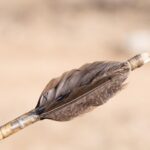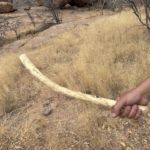Hunting bows are the primary hunting weapon for the Mentawai people and are very personal items for a hunter. They have excellent skills in using them and practice shooting from childhood onwards. During my stay with the Mentawais, I looked closely at two of these bows and will describe them in the following.
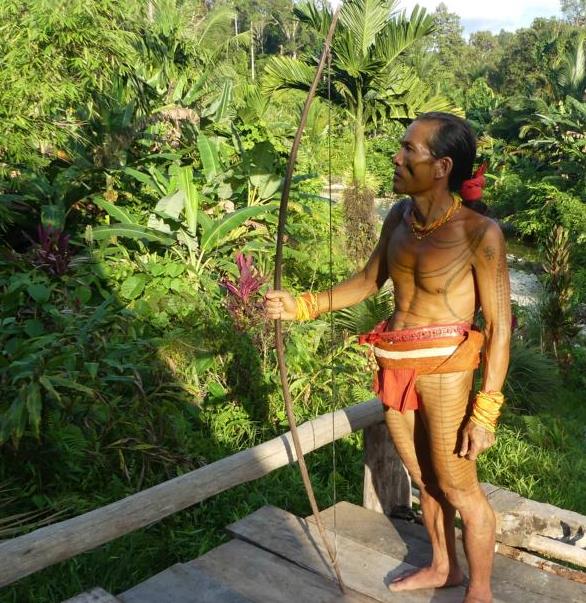
Bow #1 was the hunting bow of Aman Aru and was used to shoot a Flying fox, as described in this article on this website. Bow #2 was the hunting bow of the grandson of Aman Kuki and was also in regular use.
The Longbow itself
Both bows were made from Sugar palm (Arenga obtusifolia) wood. ‘Langkap’ is the common name of this palm species in Bahasa Indonesia. Mentawai people call it ‘Poulah’. The wood is dark brown and extremely hard, tough, and rot-resistant. It is finely grained and can be carved without splintering. Sugar palm stems have a rigid sapwood ring surrounding the inner areas for storing starch. See this scientific paper.
The length of unstrung Bow #1 was 1,85 m / 6 ft; the size of #2 was 1,82 m. Both bows were considerably longer than the height of their users. The cross-section of the limbs at both bows was round at the nock ends and elliptical at the middle.
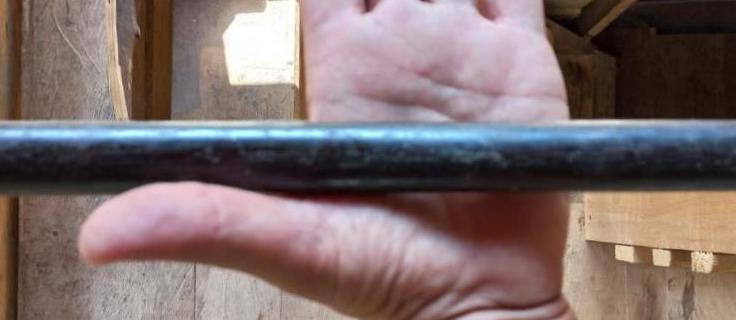
The thickest width at bow #1 was 2.3 cm / 0.9” at a depth of 1.7 cm / 0.67”, which was very similar to bow #2. So, both limbs were shaped very similarly on both bows; the design of the nock areas just differed.
Nock areas of bow #1
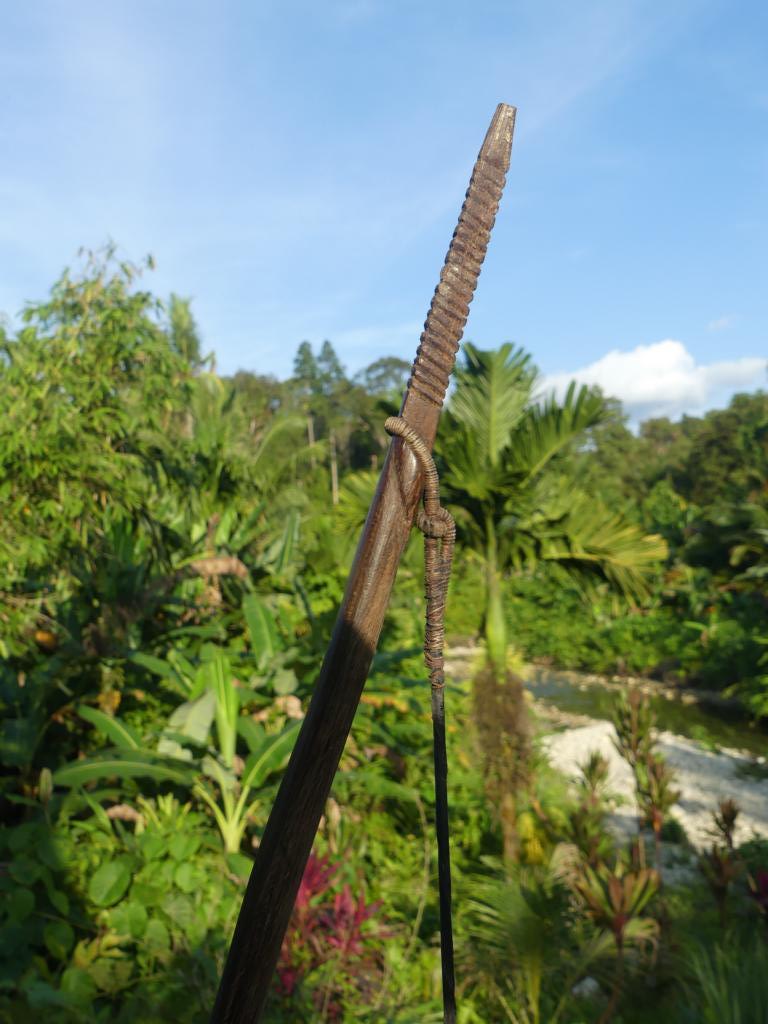
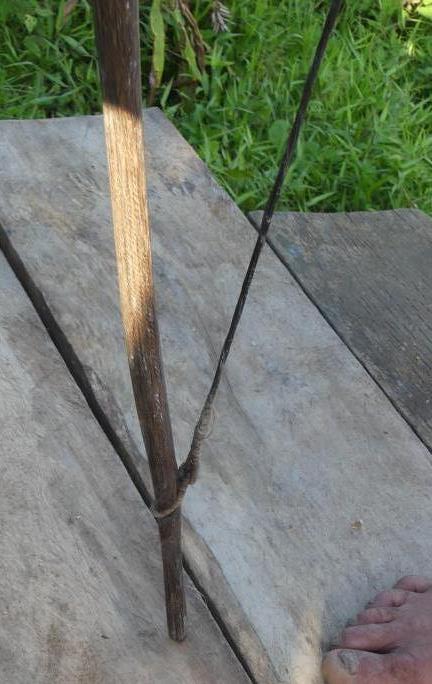
The top string nock was located over a bulged knob, and the top nock area was carved with a regular series of decorative notches. The bottom string nock was a simple recess, and the bottom nock area was tapered without decorations.
Nock areas of bow #2


The top string nock of this bow was a deep recess, and the top nock area was carved with two sets of notches. The bottom string nock was a functionally shaped recess, and the bottom nock area was carved as a bow stand.
Bowstring
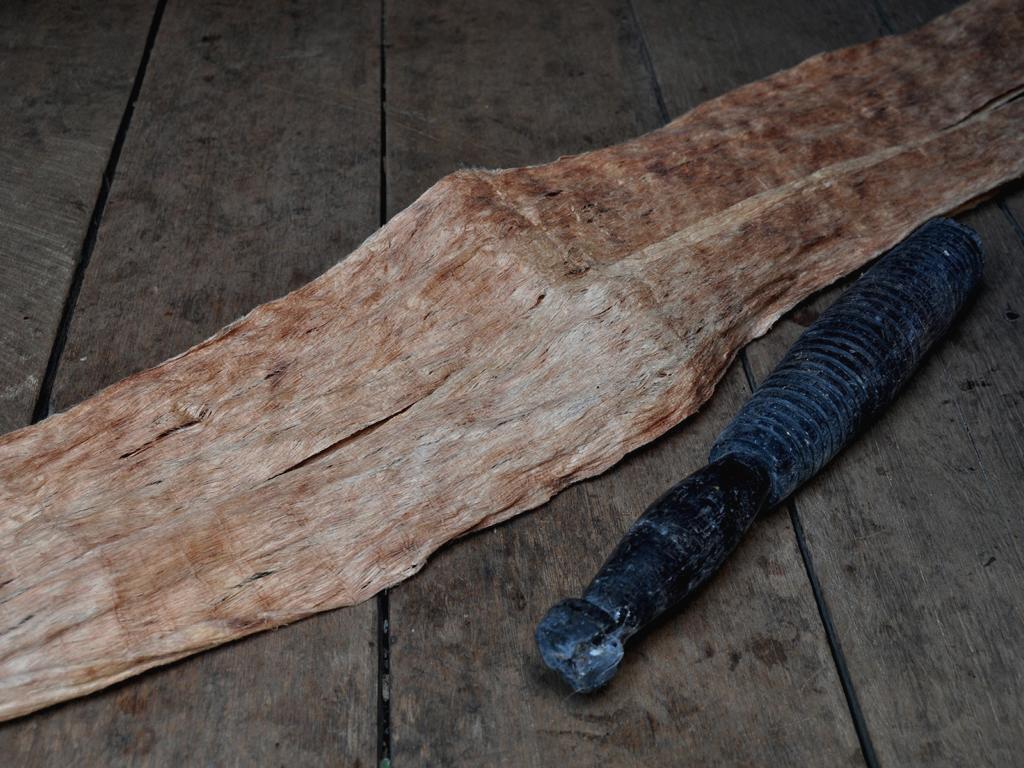
The bowstring of bow #1 was made from the inner bark of a Tarok tree (Artocarpus elasticus). That is the same tree the loincloth is made of, called ‘Baikho’ in the Mentawai language. The string was twisted from strips of bark and, after that, pitched. The pitch was obtained by crushing and squeezing the bark of a dyewood tree, which produces a red, sticky substance that turns black when dry and is no longer sticky. I could not establish the exact species of dyewood tree from which the pitch was sourced. Loop attachment and protective wrapping can be seen in the photos from the nock areas of bow #1. Bow #2’s bowstring was made of commercial Paracord with protective wrapping, which kept the loop stiff and secure.
Aiming and shooting method
The hunting bows of the Mentawai people have heavy draw weights. I have been doing bow hunting since 1990. But fully drawing that Mentawai longbow was impossible for me. Although Aman Aru is slightly crippled (15 years ago, he fell from a tree and broke his spine), he effortlessly shoots arrow after arrow.
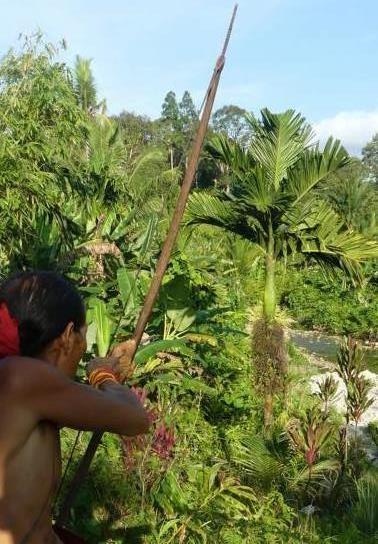
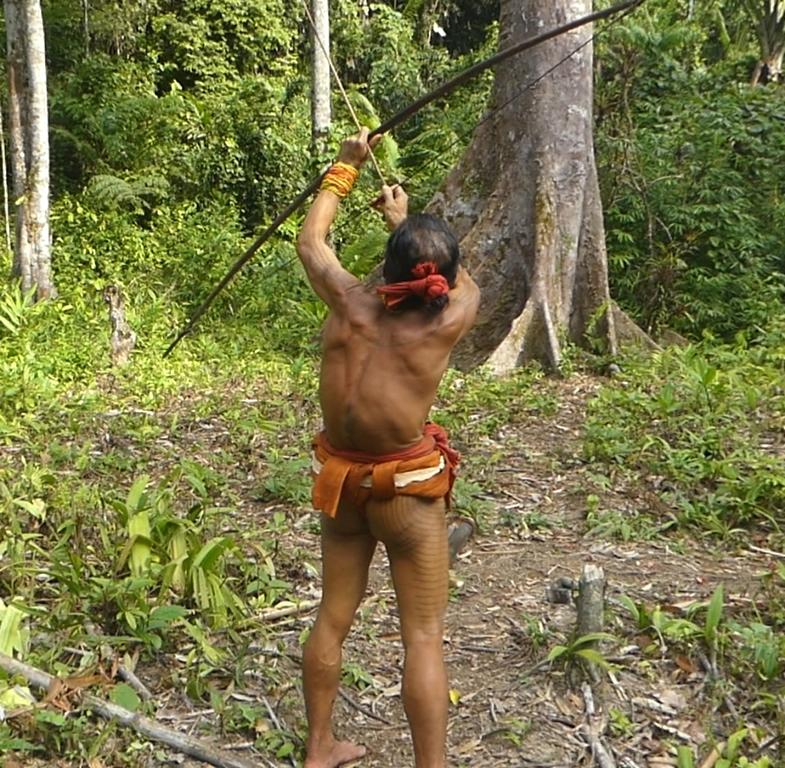
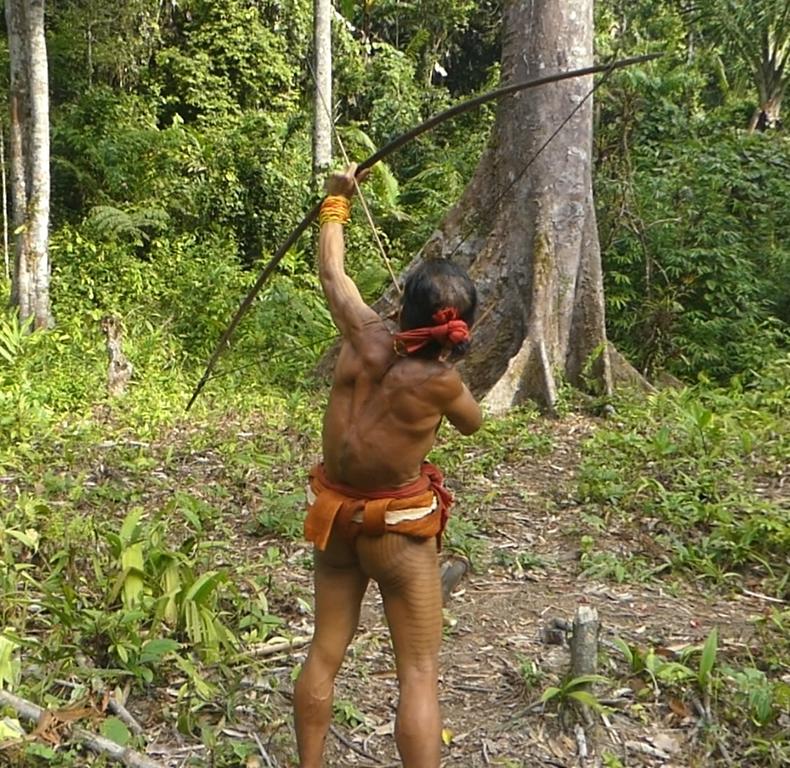
Aman Aru held the bow slightly skewed and stabilized it with a thump. He aimed in a gap-style manner by placing the tip of the arrowhead in a spot, which ensured that the target was hit at a specific distance and elevation.
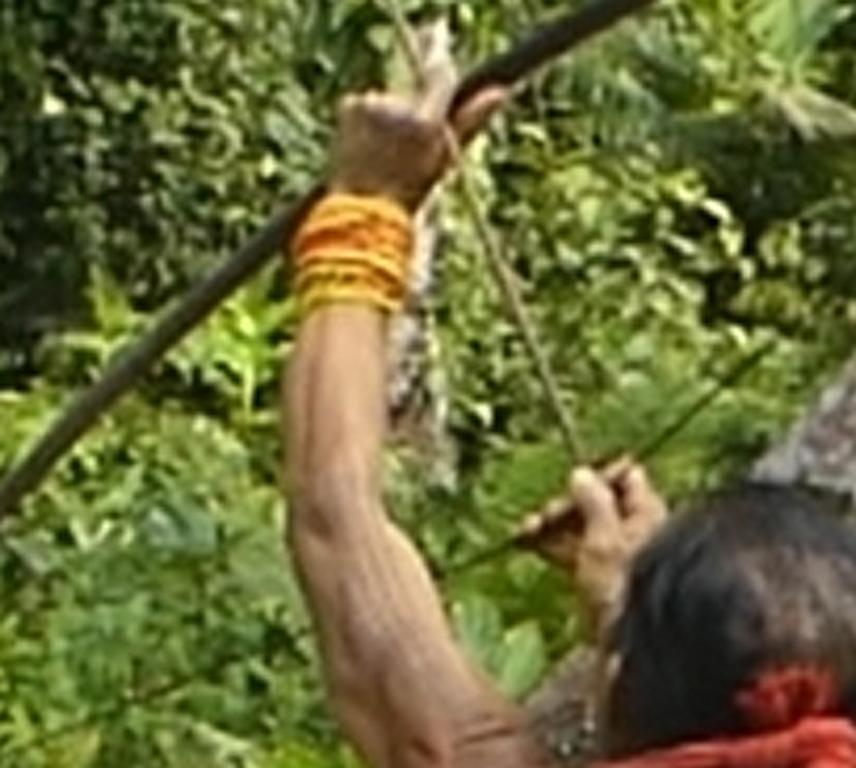
After nocking the arrow, he stretched the bow hand forward and drew the string in a fluid motion until releasing the arrow. The tip of the arrowhead was always on the gap target. He used a pinch grip when holding the arrow and all three other fingers to draw the string. Although the bow hand was not locked in position and an anchor point could not be seen, he hit his targets repeatedly. His muscle memory was working perfectly.
Lessons learned from hunting bows of the Mentawai people:
- Sugar palm wood is a first-class material for hunting bows of the Mentawai people.
- The physical weight of these hunting bows is below 0.5 kg.
- Draw weights are so heavy that only specially trained archers can draw them.
- Aiming is done gap style.
- Both hands’ gripping style seems unconventional for Western archers but proves highly effective.
.



